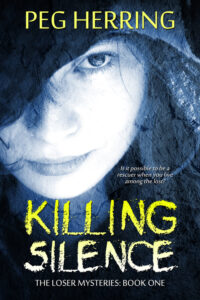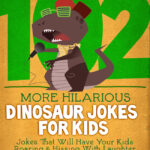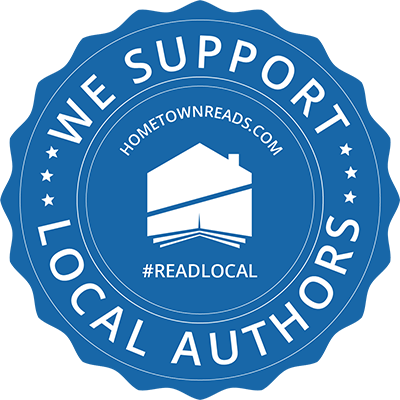Today we welcome author, Peg Herring, to The Editing Essentials! The first book of Peg’s I read was MacBeth’s Niece, a very enjoyable story. Thank you, Peg, for joining us today!
 Peg Herring is the award-winning writer of three series and several standalones. A former educator, she lives in Michigan with her long-time husband. They often go traveling, much to the disgust of their cats, Trouble and Alice, who are left at home to guard the place. Visit Peg’s website at http://pegherring.com or her Amazon page, Amazon.com: Peg Herring
Peg Herring is the award-winning writer of three series and several standalones. A former educator, she lives in Michigan with her long-time husband. They often go traveling, much to the disgust of their cats, Trouble and Alice, who are left at home to guard the place. Visit Peg’s website at http://pegherring.com or her Amazon page, Amazon.com: Peg Herring
As a writer of three series, with nine published books and two more on the way, I’d like to address five writing questions people ask at my workshop, “Write, Edit, Publish!”
1. “I have a great story idea, but I can’t get started.” (or “I can’t get past the first three chapters.”)
It’s hard to write a book. Really hard. On the other hand, it’s easy to let storylines float through your head, where every idea seems interesting, workable, and compelling. It’s only when you try to write them down that you realize it won’t work.
So lots of people have great story ideas, but only a few write those stories down. It might be that you really don’t want to write a book; you just want to say you’re a writer.
If you are willing to do the work, great–now apply the BITCH principle: Butt In The Chair, Honey! Thinking about your book, talking about your book, even outlining your book isn’t the same as WRITING your book. Set a time each day to work. Any active writing is better than that filmy wisp in your mind.
If (when) your progress stalls, do something else for a while, but then make yourself go back to work. It might not go well. You might even have to toss a day’s work (or two or three), but you must actively write rather than letting yourself imagine that point in the future when it will all flow seamlessly from your fingertips. Ain’t gonna happen.
 2. “I’m three-quarters done, but I don’t know how to end the book.”
2. “I’m three-quarters done, but I don’t know how to end the book.”
We sometimes call that the Muddle in the Middle. You’ve got so many strands going that you don’t know how to weave them into a whole. Again, the only thing to do is finish it. For me, writing the ending clarifies what has to happen in the middle. “Oh!” I say to myself. “A paragraph on page 92 will clear that little knot up nicely.” And it does, but only when I’ve seen how the whole thing resolves.
3. “I finished my book, and my mom likes it. How do I know if it’s really good?”
Don’t trust Mom; she loves you too much. In fact, don’t trust the opinion of anyone you know. (You might ask, “Will you give me ten bucks to read my manuscript?” That separates the wheat from the chaff!) It’s easy for friends and family to gush, “Gee, that’s great! You should publish.” When there’s no investment required, almost everyone will say nice things. It makes you happy.
My first advice for judging the quality of your own work is wait time. Let a manuscript rest for a few weeks and then go back to it. Often your reaction will be, “What was I thinking?”
I always read the manuscript aloud or have my computer read it to me. My ears find lots of things needing attention that my eyes didn’t see.
I read each of my manuscripts many times. One reading assures that I’ve included at least one non-visual description on each page. It’s easy to tell what things look like, but what do they sound, taste, feel, and smell like? That adds depth to your description and interest to your writing.
4. “What’s different about writing mystery?”
Mystery requires everything other types of writing require AND a puzzle for the reader to figure out. Mystery authors walk a fine line, tossing in clues to the solution while trying not to give away too much. A reader’s reaction upon finishing a mystery should be, “I didn’t guess the killer, but I should have.”
The modern mystery has lots of elements: suspense, romance, history, paranormal, occupational info, police procedures, and even crafting trivia. The writer needs to enlighten her readers without obscuring the mystery with facts, anecdotes, and quilting details.
 5. “How do you keep yourself interested when writing a series?”
5. “How do you keep yourself interested when writing a series?”
Aha! This is where I get to tell you about my work! I have a historical series with Five Star Publishing set in Tudor England (next book, THE LADY FLIRTS WITH DEATH, May of 2013).
My Dead Detective Mysteries (LL-Publications) are mildly paranormal, meaning some characters are dead (no drooling zombies). THE DEAD DETECTIVE AGENCY won EPIC‘s best mystery of 2012.
The new series, The Loser Mysteries (also LL), begins in November with KILLING SILENCE. Loser, a homeless woman, is haunted by her past and endangered by her present as she tries to help a young father accused of murder.
How do I keep three series from driving me crazy?( I often don’t!) Some things I’ve learned to do help: first, I work on one book at a time, whether writing or editing. I attack whatever’s most pressing and put other projects aside until I’ve finished it.
Second, I keep notes on what the characters look like, drive, eat for breakfast, etc. It doesn’t do to say Loser hates oatmeal in one book and then have her order it in a restaurant in the next.
Finally, I have in mind the general arc of the series before I begin, with an idea of how many books it will entail. The Dead Detective Mysteries is a five-book series, following the adventures of Seamus, who resolves problems he faces while helping others solve theirs. Seamus’ story weaves through the series, so the solution to the mystery in each book is only part of the reader’s enjoyment of the larger story.
That’s a little of the advice I give writers. If you have a specific question or a comment on something that works for you, I’m ready to listen.
Thanks, Peg, for the great tips! If you have a question or comment for Peg, she’ll be with us all day. Thank you!










